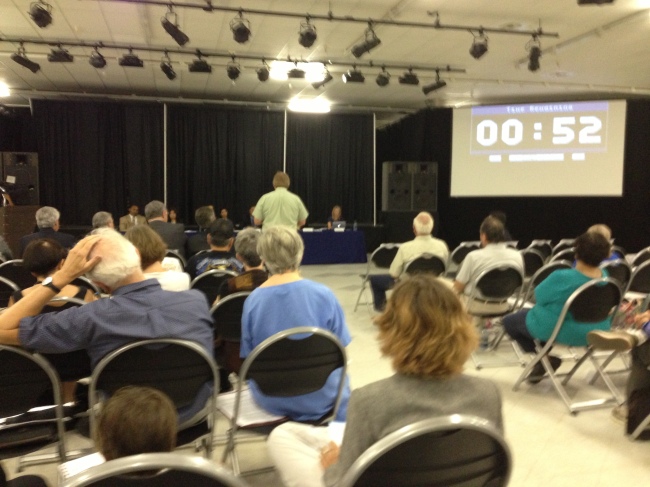When I first heard the phrase “climate change”, I, like many others, was undecided on the matter and really didn’t have a clue what that phrase was supposed to mean. Should I be scared? I hope the daily climate would change all the time over here in Texas. This confusion led to a trip to the internet, where ignorance is optional, and over time I read a lot about it, trying to avoid opinionated rants while relying on credible sources of information to mold my perception of the truth. I found myself studying the carbon cycle, reading those really long and uninteresting scientific papers, and watching documentaries such as Chasing Ice, where a scientist captures glaciers in motion through time lapsed photography as they recede and disappear. I really dove in. The deeper I dove the more evidence came to support the notion that earth’s climate system is changing and our planet is slowly warming in a way that will likely be detrimental if not dealt with.

Home Sweet Home
What a massive and complex force to have to deal with. Trying to mitigate a change in the Earth’s climate seems like a pretty daunting feet. So, how do we solve this problem? I guess the default answer would be, “to find the solution.” However, I believe “the solution” needs to be rephrased with “many solutions, collaboratively recognized and implemented worldwide.” A major part of this solution needs to face one of the most influential causes of climate change, such as our current escalated contribution of greenhouse gases (GHG’s), namely carbon dioxide and methane, to the atmosphere.
Explanation of Green House Gases (GHG’s):
GHG’s, when in higher concentration in the atmosphere, cause the atmosphere to trap more and more of the sun’s energy, resulting in the warming of our planet.

Nasa’s explanation of GHG’s
This process becomes worrisome when you consider that the carbon dioxide concentration in our atmosphere has increased by more than 35% since 1975 and is at an 800,000 year high. Even more worrisome is the fact that, according to the National Research Council, “the average temperature of Earth’s surface increased by about 1.4 degrees Fahrenheit over the past one hundred years with 1 degree of this warming occurring over just the past three decades.”
So if this is really happening, how do we stop it? Well, one could start with the major source of this greenhouse gas concentration increase, which can be attributed primarily to the growth in carbon dioxide emissions from rapid expansion of fossil fuel burning. Other attributing factors include deforestation and land use and land cover changes.
Explanation of fossil fuel burning’s role in the carbon cycle:

Previous plant and animal remains trapped within geological structures in places all over the world, along with millions of years of heat and pressure, have created reservoirs of natural gas, oil, and coal. These reservoirs, in the form of hydrocarbons (long chains of Hydrogen and Carbon), have been stored sources of Carbon for a great amount of time. When these reservoirs are extracted and undergo a combustion reaction, they produce energy in the form of heat with new chemical species being formed, such as carbon dioxide (a green house gas).
I’m fascinated by our capability to discover these remains of ancient life forms and even more so at our ability to use them to meet the present day needs of our energy-reliant society. However, with a global oil production of 83.6 million barrels a day in 2011, this Carbon which has been stored underground for an extremely long amount of time is now being released into our system at a rapid rate… so would the statement, “too much of a good thing, is a bad thing” apply here?
I understand that the burning of fossil fuels is integral to our way of life and energy needs. The intricacy and complications of making rapid emission cuts would have great impacts for our infrastructure and societies. However, the likely effects of climate change/global warming could have even greater, more damaging, impacts on our infrastructure and societies. This is why it is necessary to confront this issue now and progress towards a greater reliance on renewable energy for our present and future energy needs.
This progression is much easier said than done and will undoubtedly be met with great opposition, especially by those involved in fossil fuel energy production (people like my mom). However, I like to perceive it as simply as one of my favorite environmental quotes, “if you get to the cliff, you can take one step forward or turn 180 degrees and take a step forward”.
For one, we’ve already discovered, engineered, and implemented many new means of capturing energy (wind, solar, hydroelectric, geothermal, biomass), all of which are readily available in specific regions, produce nearly no emissions, and are, except for hydroelectric, far less water intensive. We already have a large part of the solution, all we need is implementation. More positive progression was initiated this week as President Obama, leader of a nation that ranks as a close second place behind China in GHG emissions and energy consumption, made a speech that presented some bold, progressive goals: using full authority of the clean air act of 1970 to reduce carbon emissions from power plants, accelerating the implementation of more renewable energy that will “power 6 million homes by 2020”, and reducing energy waste through new energy efficiency. He also is trying to push congress to end the tax breaks for big oil companies to invest in “the clean energy economies that will fuel our future” and is calling for initiatives to prepare for the inevitable future effects of climate change.
Implementation of these plans will take time, will require governmental initiatives to speed up the process, and will require specific measures to alleviate the negative impacts such change will have on certain individuals. An example of governmental measures to take would be to reduce the massive amount of money that is used to subsidize fossil fuel production and to allocate that money to renewable energy implementation. To alleviate this energy production shift on individuals, retiring fossil fuel companies will need to provide a just transition for its employees: examples include a large preliminary warning, new training, and good retirement packages.
It’s very exciting that the willingness and need to change has been stated by one of the world’s most influential people, but the battle has only yet to begin and many other solutions will need to be presented and implemented if we hope to come out on top. However, optimism is reborn from the depressing ashes of climate change talk as I reflect on how incredibly smart we are as a human race, how much we already know about the issue, and our amazing problem-solving abilities and can’t help but think, this is going to be a good fight.
Written by: Chase Cobb






